In 1992, Neal Stephenson wrote a novel called Snow Crash.
The premise was this: following worldwide societal collapse, the protagonist spent most of their time escaping from their dismal reality into the Metaverse, a cornucopia of virtual delights where users control avatars -and they can be whatever they want to be. Your status in the metaverse relies on where you can go, what you can do online, and how your avatar looks.
In 2021, Mark Zuckerberg wrote a letter.
The premise was this: technology has come far enough that we can do more than just use it, we can totally inhabit the internet as whatever we choose to be, do whatever we want to do, and participate in experiences that real life cannot supply.
If it sounds familiar, it’s because this is the metaverse.
And while it isn’t ready yet, this is the future that Mark Zuckerberg sees for his company – to the tune of a $3.7bn loss in the previous three months, and a total of $9.4bn since its inception: a loss that Mark Zuckerberg is happy to pay as an investment in an internet of the future.
But the metaverse is here. You’ve seen your favourite companies engage in it, create activations in it, make their mark on it.
It just looks entirely different from what we, and Mark Zuckerberg, expected.
As a result, there’s a lot of confusion over what is, and isn’t, the metaverse.
There’s a lot of confusion over whether this is a temporary fad, like 3D televisions, or something that will outlast us all, like Blu-Ray.
And there’s a lot of confusion over how you even use something like the metaverse, and what it can do for you, your business, and your reputation.
We get it. Every piece of technology we’re used to was new once, and these questions crop up when the cycle repeats itself, and something comes to the market that hasn’t been seen before – and it’s hard to understand it without someone explaining it to you, or doing a ton of research yourself. Nobody’s got time for that.
We do.
So here’s everything you need to know about the metaverse, and all the questions you have, answered.
Let’s start from the beginning.

What is the metaverse?
The metaverse is the internet, made three-dimensional.
If you’re one of those people who game, you’re already part of a kind of metaverse: anyone who plays online with an avatar forms part of one version of the metaverse. Essentially, what Mark Zuckerberg wants to build is a giant playground where people can interact through fictional avatars.
But it’s a little more complicated than that.
The metaverse is real life. The metaverse is a fictional life. It is an experience. It curates the experiences for you. It sells products.
There are products specifically made and designed to be sold by metaverse entities, which before the introduction of the metaverse, did not exist in the same permutation.
The biggest comparison to the metaverse is Second Life or Playstation Home: online games where you are both yourself and better than yourself, where you can connect and interact with people on a global platform in a virtual space as though they are right next to you.
This is a reductionist’s view of what the Metaverse is actually supposed to be – but it is a very accurate read of what the metaverse currently is, and will remain so, for some time. To that end, we’ve already attained the idea of the metaverse, but not the idea of the metaverse that Mark Zuckerberg debuted in his fantastical video way back in 2021.
That has a few more years in development.
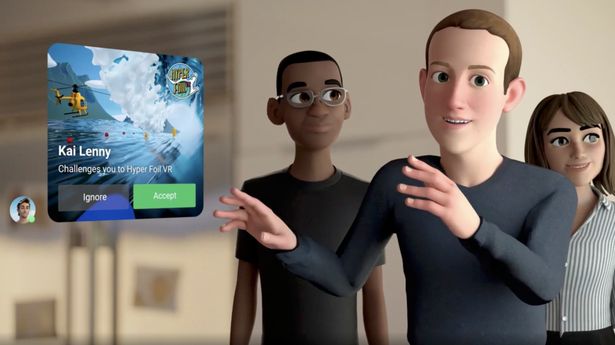
So the metaverse is an online universe?
The idea of the metaverse can be split into two distinct categories:
- The true metaverse, or what Mark Zuckerberg proposed and has not yet been attained.
- The actual metaverse, or what we are seeing at this moment.
To paraphrase Matthew C. Bell’s excellent work, the metaverse has elements of everything it’s been compared to. Like online multiplayer games, the metaverse is live, experiential, and persistent. Like social media, it has its own internal economy and content ready for plumbing. Like virtual reality, you can hop into any experience you desire and participate in events.
This version of the metaverse isn’t yet something we’ve seen. It’s likely not going to be around for years, and for a few reasons.
The true metaverse that Zuckerberg showcased in his debut video, and the one that Matthew C. Bell identifies, is more like a synchronous, infinite 24-hour cruise ship. Visit at any point and something is happening; need something at any point, and you can probably get it then and there. It’s a sense of place. It’s a sense of being part of something bigger than you.
It’s a sense of never really missing out and being able – regardless of where you are – to take part in something greater.
Naturally, this makes it attractive for all businesses.
But the metaverse we are currently capable of now is a much smaller version of what it’s supposed to be.
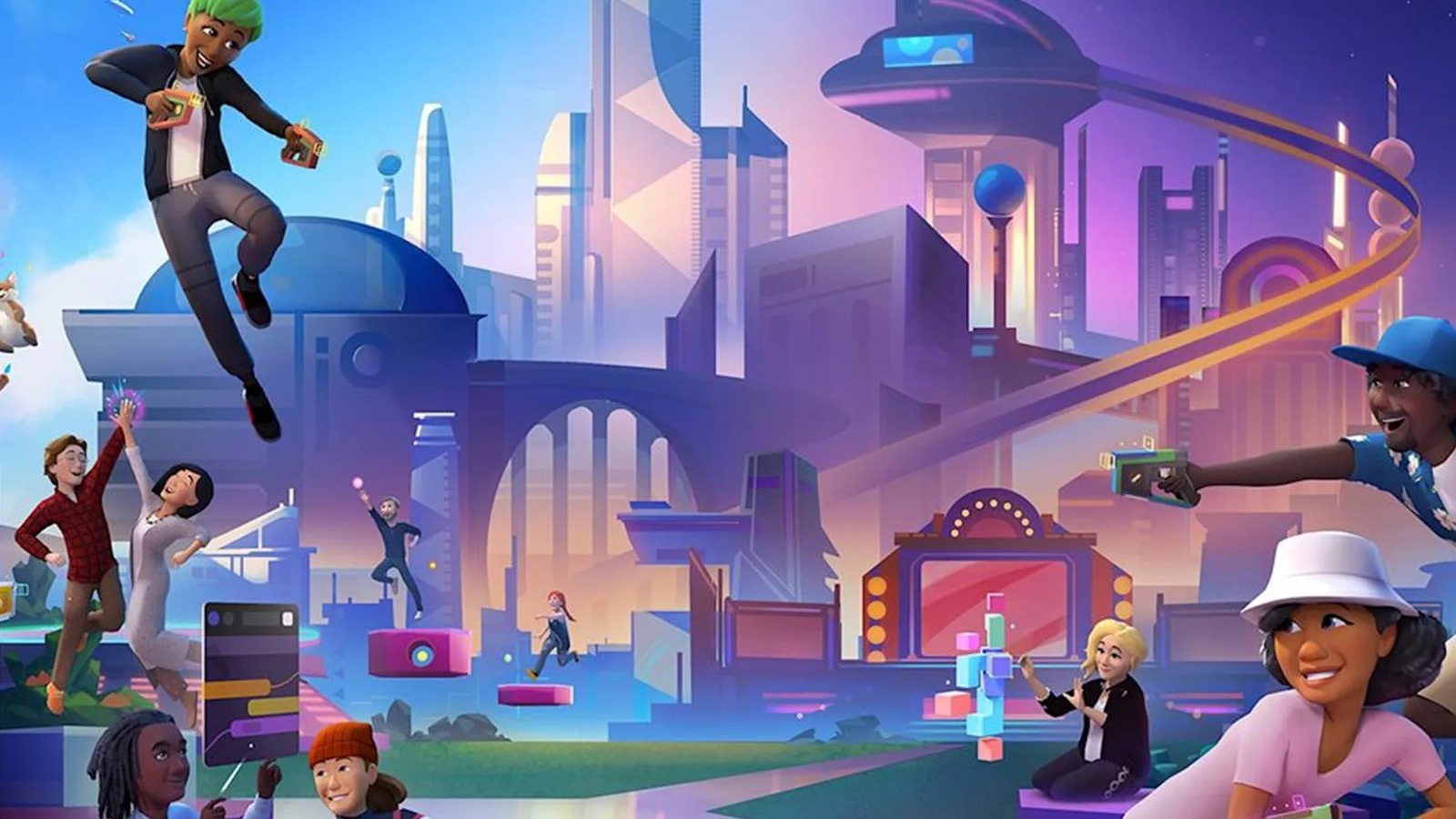
What’s the difference between Mark Zuckerberg’s metaverse and what we have now?
The key difference between them is immersion.
The metaverse that Mark Zuckerberg proposed will be fully immersive. Touch something, and you’ll feel it in your hand. Attend a concert, and you’ll get all the concert noises: the music, but also the people singing along to the songs next to you, or the press of voices. Go through a lobby, and you’ll hear people talking at different volumes depending on how close you are to them.
Some of these features have already been seen elsewhere. Skittish, the online meeting app, is no longer available, but it had audio that varied depending on how close you were to other speakers. Haptic feedback is likewise old technology.
However, these instances of interaction are kept much smaller. When we see 3D audio or haptic feedback, it’s because we’re engaging in something that uses those features and plays out in the same way for everyone, such as a videogame.
Zuckerberg’s metaverse isn’t a single unified experience. The metaverse that Mark Zuckerberg proposes caters itself to you, and the experience you engage in is also catered to you. This requires technology that hasn’t yet been perfected – full immersion hardware is difficult, and pricy, to create, despite attempts going back to 1968 – and therefore it isn’t widely available.
This means that the metaverse Mark Zuckerberg wants isn’t here yet.
The metaverse that we have now isn’t as immersive. We have 3D spatial audio. We have the haptic feedback. We have a ton of little adjustments that you can make to cater a particular online experience to yourself – but at its core, it won’t be fully immersive if you don’t have the hardware to make it immersive.
And with virtual reality headsets carrying a significant price tag, the hardware will need to become a lot more accessible before Mark Zuckerberg’s vision of the metaverse is a reality.
The metaverse Mark Zuckerberg envisioned is accessible. The metaverse that Neal Stephenson wrote about is accessible. A metaverse where only the people who can afford to pay out the prices to play is not a metaverse – it’s an exclusive club where the price of admission is a product in itself. If only people who can afford to pay participate in the metaverse, there’s no metaverse: there’s a paywalled internet.
And that’s effective for anyone: for the consumers, for brands, and for the people who are building the metaverse.

So—what’s the metaverse we have now like?
In a word: fractured.
Although Horizon Worlds is one of the biggest metaverses available, there are several different ones that have cropped up to take advantage of the hype.
Besides Meta, there’s also The Sandbox and Decentraland, a ‘desktop’ metaverse that ties in crypto and the blockchain into their foundation and don’t require a VR-headset to log on. Apple, Google, and Microsoft are also working on their own metaverse projects, though little information is available about them at this time. Other, smaller metaverses, like Illuvium, Sorare, Upland, and Somnium Space, are either in development or in early beta testing.
More are on the way, and with over 500 companies throwing their hat in the metaverse game, we’re likely going to see a lot more of them develop year-on-year.
Currently, the most popular platforms are:
- Meta’s VR-based social networking zone.
- Available activities include small multiplayer games, building, or live events.
- Mostly used as a kind of living Facebook, with people meeting up to talk to others.
- Built to create and sell digital assets in the form of real estate.
- Do not need a VR headset to use but you do need a crypto wallet to access the full list of features.
- Built to create and sell digital assets with a digital real estate component: each LAND allows you to build interactive experiences, creating a metaverse within the Sandbox metaverse.
- Do not need a VR headset to use.
- Breed, collect, and trade small creatures.
- Requires a digital wallet to use.
- A digital asset marketplace and web3 gaming platform.
- Also has a social component with livestreams, tournaments, and a dedicated chat service.
- A digital platform focusing on its own economy and currency, with its own dedicated marketplace, games, and social experiences.
- Available on PC or VR.
- Auto-fighting roleplaying game with play-to-earn mechanics.
- Avatars double as NFTs to be sold and traded on the marketplace.

Wait, platform? What’s the difference between the metaverse and a metaverse platform?
Think of it like a housing estate.
The metaverse itself is the estate: an encompassing environment and a set of ideals.
A metaverse platform is one of the houses making up that estate. You can only have one metaverse, but several platforms can form part of the metaverse.
So it’s not just a Facebook thing?
Meta’s idea of the metaverse is the most well-known, but it’s neither the first nor the only company that’s working on the next stage of the internet.
Other companies have their own idea of a more immersive internet. Other companies have started making the technology that you can use to fully engage with metaverse platforms.
And other companies have started creating activations or events online that are inspired by or have elements of the metaverse.
Decentraland, one of the primary metaverse platforms available today, was launched a year before Facebook became Meta, and has been in development since 2015.
The metaverse is not just a Facebook thing.
And other companies have started creating activations or events online that are inspired by or have elements of the metaverse.

Besides games, what can you do in the metaverse?
Games are a big part of why the metaverse has attracted so much attention: besides the actual games on various metaverse platforms, there’s also the fact that a lot of what happens on the metaverse is gamified in a way that will appeal to wider audience than just those who enjoy videogames, especially with the focus on integrating blockchain technology within the metaverse.
However, not all metaverse platforms are created equally.
Take Horizon Worlds.
Horizon Worlds has less of an emphasis on NFTs and blockchain technology than some of the other metaverse platforms mentioned before, such as Illuvium or Decentraland. Part of this is due to the fact that Horizon Worlds is intended to appeal to children as well as adults, and though the app says that it’s only for kids aged 18 and up, kids younger than that have still hopped onto the platform. Additionally, Horizon Worlds is created solely as a way to interact with people across boundaries. It’s a pandemic product that was released after the notable interest in experiences and connections that didn’t rely on physical time and place.
Other metaverse platforms have a greater emphasis on trading, NFTs, and creating an experience that’s a little more like real life. With Horizon Worlds, the lure is connection. With platforms such as Decentraland, part of the lure is monetary: what can you get for what you invest.
Virtual art galleries where you can click and purchase any NFT you like, provided you have the money. Concerts with real artists that take place on a stage floating above the heads of the crowd. Games where what you win can be found in real life.
The limitations of the metaverse platforms are obvious.
But so are the possibilities.

What does the metaverse have to do with NFTs?
You can have the metaverse, and NFTs, as a separate concept.
But they work better together.
In the metaverse, there’s a lot of emphasis placed on who you are: what you like, what you don’t like, what you support, what you own.
Especially what you own.
Mark Zuckerberg’s idea of the metaverse hasn’t introduced the idea of digital asset ownership yet, but it will. Other metaverse platforms, like Decentraland, are built around the idea of ‘you are what you own’ – whether it’s virtual land, an in-universe representation of a brand you really like, or something that you can only get online. Like the real world, owning the digital idea of something has inherent value, and it’s one of the things that the metaverse can do with aplomb. It might not be on the level of NFTs, but digital ownership in metaverse platforms is the clearest indication of status in-world that currently exists. Those who shell out real money for digital assets showcase their worth in ways that are impossible to ignore. Others, who prefer not to, will stand out precisely because they do not stand out: they’ll become a crowd of people who opt for the free assets or prefer to only look, and not participate, in the metaverse platform culture.
And given how people like to stand out, this is where digital assets will prove their value. Those digital assets are solely theirs: they can trade them, resell them, build on their capital using them, invest and re-invest to grow their fortune. The scarcity of these assets is built into them – once they’re gone, they’re gone for good.
This develops a demand for them. It develops a need to make your mark. Call it FOMO. Call it investing in the future.
Whatever drives people to purchase online assets, it’s powerful. And while not everyone is sold on owning things digitally, there are enough who are that it has become the core of several metaverse platforms.
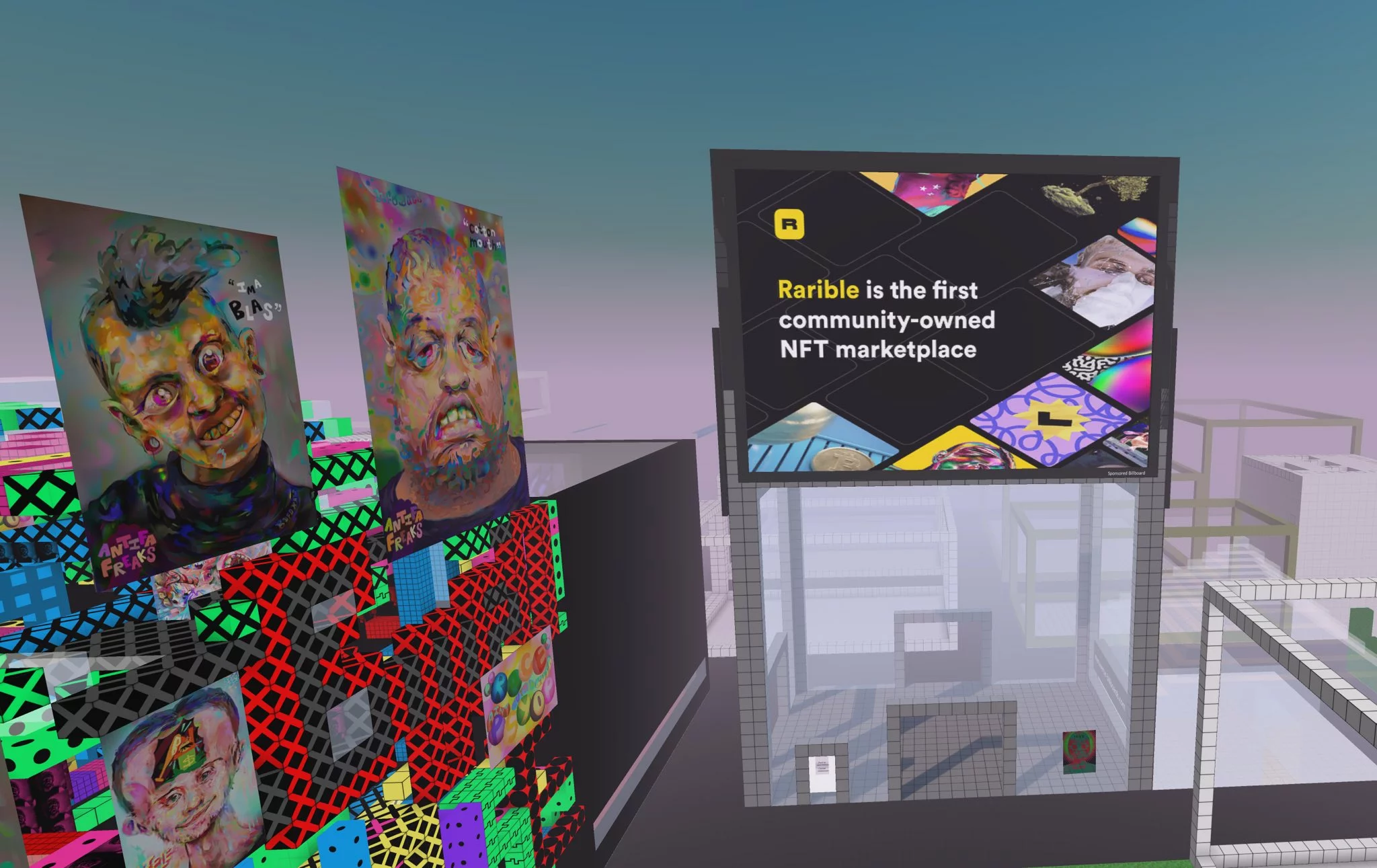
Is the metaverse good for business?
Yes, provided that the business investing in the metaverse understands that this is a long game, and not one that they’re going to see a massive profit from until it’s refined a little further.
This doesn’t mean that there’s no profit to be had.
Do you remember when the internet was new? When the idea of advertising online – not on billboards, prints, television, or radio – seemed ridiculous and a waste of money?
We know today that that thinking is flawed. We know that the internet ushered in an age of globalisation that companies are still trying to catch up to.
The metaverse is a similar situation. Advertising on the metaverse now isn’t going to give you a wider audience or a more global presence; the fans of your brand that might also be interested in the metaverse will be a much smaller subset of your already-existing audience.
But they’ll be an important part of your brand’s early adventures into the metaverse. And once the metaverse becomes more prevalent – because it likely will – they’ll be the catalyst that will help you grow your audience in the metaverse.
Just like the first fans on your Facebook helped grow your Facebook page or found you again on Instagram.
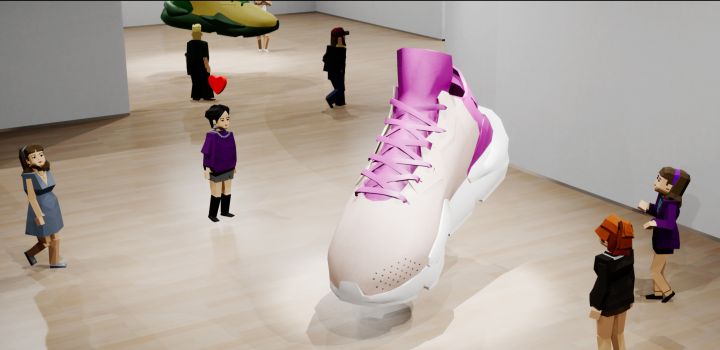
Is the metaverse necessary for business?
Not yet.
Think of it in terms of audiences.
Say your brand has 10,000 die-hard fanatics: the kind of people who buy every product, follow you on every social media, and attend every event. Of those fans, perhaps only 1,000 will have the capacity and time to actually hop onto metaverse-themed events. If those events require products that they don’t possess, such as a crypto wallet or a VR headset, that number will reduce further.
If your concern is purely getting more people invested in your brand, then getting into the metaverse from this early stage might not necessarily give you what you need.
However, if you’re playing the long game – and we always suggest playing the long game when it comes to advertising – then it’s necessary to start investing, and if it’s not investing in the metaverse, it’s investing in activations that go online, activations that partner with videogames, and activations that turn your brand into something people can experience beyond boundaries.

What if I don’t want to invest in the metaverse?
That’s still an option for you at this stage.
Later, it depends on what the metaverse will turn into: if it will follow Mark Zuckerberg’s vision, or the present reality.
If it turns into a version of what Mark Zuckerberg envisioned – as an experience, rather than as a giant marketplace – then there’s no reason why interacting within the metaverse should be something that brands avoid, provided that there’s an understanding that their service or activation within the metaverse should be offered freely.
The state of the consumer as we’re looking at today is increasingly bombarded by constant incentives to spend. There are few opportunities for consumers to entertain themselves for free, and it’s very likely that as 2023 plays out, we’re going to see an even bigger decline in those services. This means that brands offering entertainment for free, or at a freemium, will see a marked interest in those consumers who don’t want to be left out, but can’t justify the cost.

Is the metaverse why Meta has lost so much money and laid off workers?
It’s a part of it, but it isn’t the underlying cause.
At this stage, the metaverse doesn’t really exist the way it should. To make his vision a reality, Mark Zuckerberg not only needs to develop the metaverse itself, but the underpinning technology that can support the metaverse.
To do that, you need to invest money: money that, at this point, is not coming in from other avenues.
But the metaverse investments alone aren’t why Meta is struggling. The layoffs from earlier this year highlighted an interesting aspect of Meta that gets forgotten underneath the latest round of Facebook controversies: as a company, Meta has had a long and storied history of starting projects that are later shelved or put on hold indefinitely. The people hired to pioneer those projects have – up until last year – remained employed at Meta, so while the layoffs are a significant number, it’s not a surprising number for a company that has hired on staff for projects without then reassigning them other work when the projects are rescinded.
As the post-pandemic then brought Facebook’s profits to a screeching halt – in addition to yet more controversies and EU law headaches – Meta had no choice but to overcorrect its hiring procedures by culling 11,000 of its staff members.
This is not because of the metaverse initiative. This is solely because Facebook itself has grown too large, and it’s part of a larger tech-based movement where layoffs have become the norm.
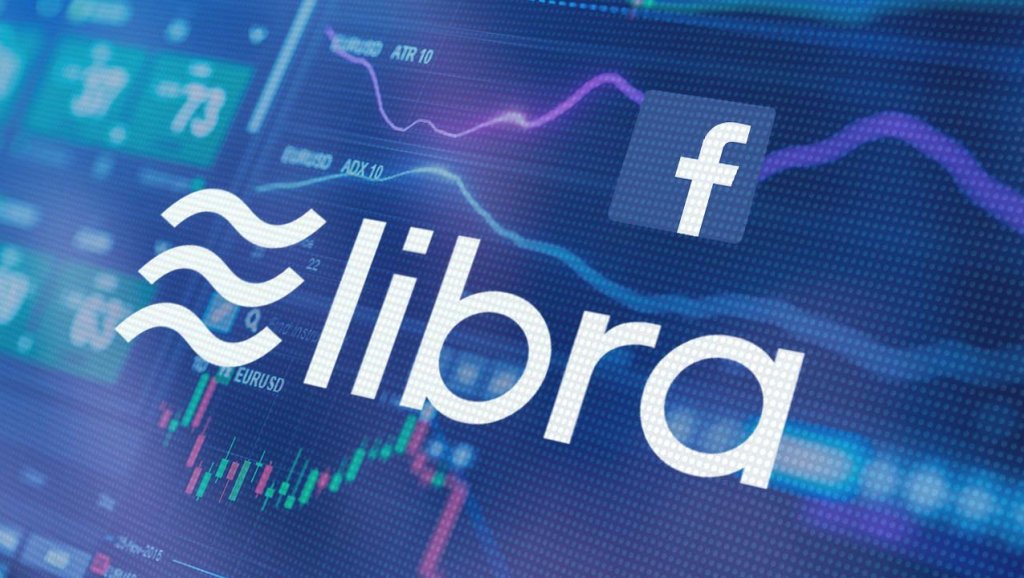
Will the metaverse end up shelved like Libra, Shops, or other failed Meta products?
The metaverse is happening, with Mark Zuckerberg’s influence or without. Despite the financial dip in 2022, Meta is still committed to seeing its ‘embodied internet’ become a reality, and is increasing the investments into Reality Labs, the branch of Meta that focuses on creating the hardware and software for the metaverse.
But the metaverse – or the idea of the metaverse – is bigger than Meta.
And it has already started gaining the kind of widespread investments that make it an eventuality, regardless of whether Meta stays their course or not.

Why is it taking so long to see an actualised metaverse?
Mostly: the technology isn’t there yet. The pricing for the technology isn’t widespread enough yet. The logistics haven’t been decided yet.
The metaverse is a completely different reiteration of the internet. Do you remember the beginning of the internet, and how long it took to go from Web 1.0 to Web 2.0?
Up until 2005, we still had the ‘read only’ web that Tim Berners-Lee created. To get to the interactive, social-media-based web we have now, it took twenty years.
It won’t take twenty years for the metaverse. The metaverse is already here.
However, the technology that props up the metaverse – the VR headsets that push the immersive aspect – might well take that much. Before we can have a fully actualised, fully immersive VR experience, the headsets need to shrink, need to run on stronger batteries, and need to take up less space.
That hasn’t been developed yet. Once it is, there is a wider conversation about pricing to be had. As we stated earlier, a metaverse that only the ones who can afford it can play in is not a metaverse: it’s an exclusive club where development will stagnate over time. For true innovation, and to realise the metaverse that is posited by the same companies who are building it, the metaverse has to be open to all – and it has to be accessible to everyone.
And then there’s the logistics to work out.
Who are you in the metaverse? Are you signing on with your Meta account, or your Roblox account? Do the platforms interconnect? Would it unduly strain servers, or is there a way of spreading out the presence of several thousand people trying to connect all at once?
That is a lesser problem – but it’s still a problem that has slowed down development.
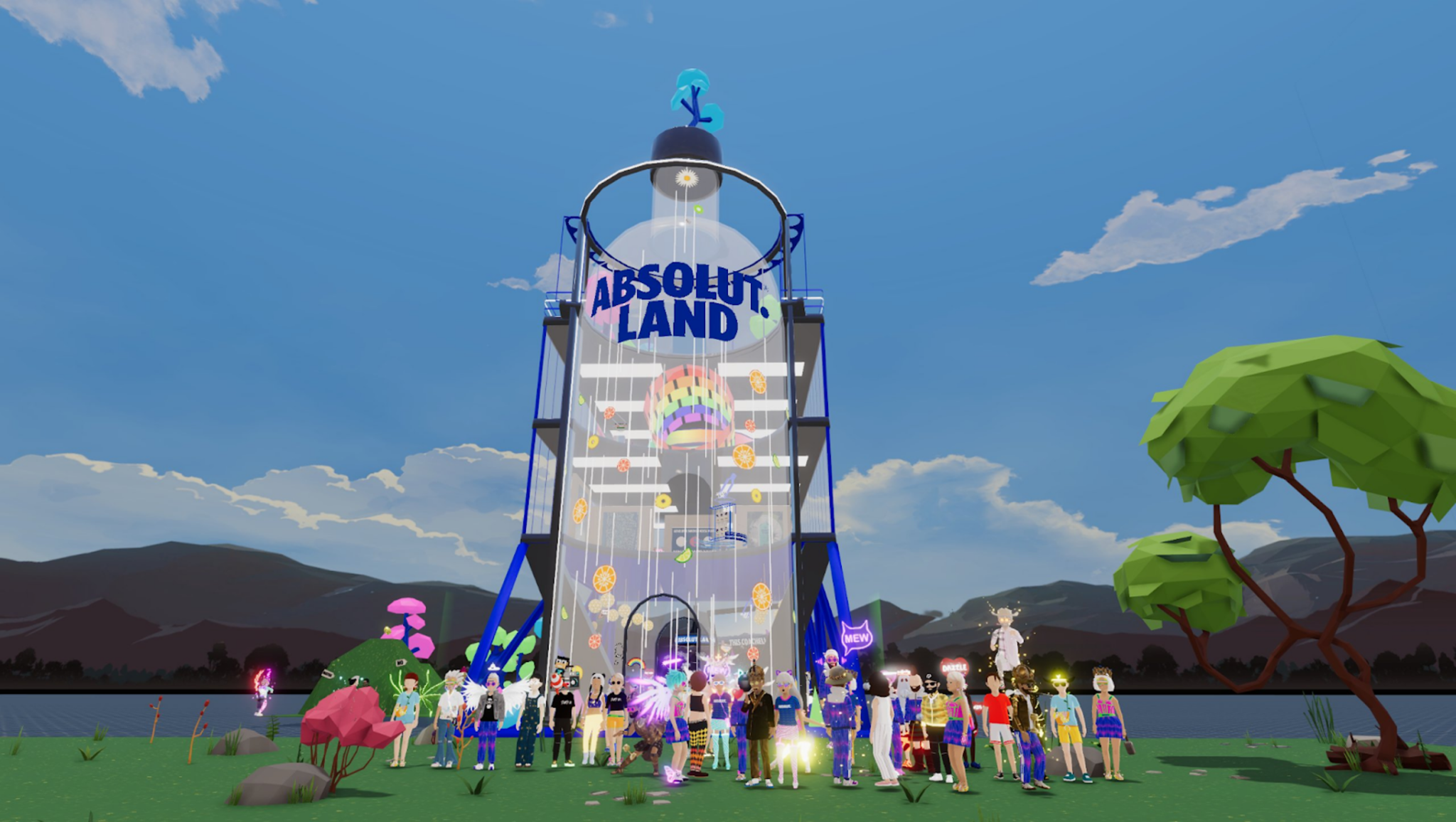
How will the metaverse help brand-consumer connections?
In theory, it will narrow the distance between brands and their consumers.
Social media already does some of this. A social media account for a brand can go a long way towards building a consumer-brand relationship that thrives in spite of brand behaviour – to a certain extent.
Brands still need to hold themselves accountable for their actions, after all. And building a relationship with your consumers goes beyond just social media.
But interacting meaningfully with consumers online is difficult. Social media can narrow the distance, but it can’t fully close the gap between brand and consumer.
The metaverse can provide ample opportunities to limit that distance. Activations built for die-hard fanatics. In-universe events that you have to be there to reap the exclusive benefits. A way of seeing a different side of your favourite brand, without leaving your house, without paying out a lot of money for the benefit, without worrying that you’re going to miss out.
Theoretically, the metaverse is limitless. Theoretically, any consumer that wants to connect with their favourite brand during an activation can do so. Theoretically, a relationship can be built through that, nurtured through that, made stronger through that.
It will take some time to get to that point – but there are already brands that have put on metaverse-lite applications.
The results are very promising.
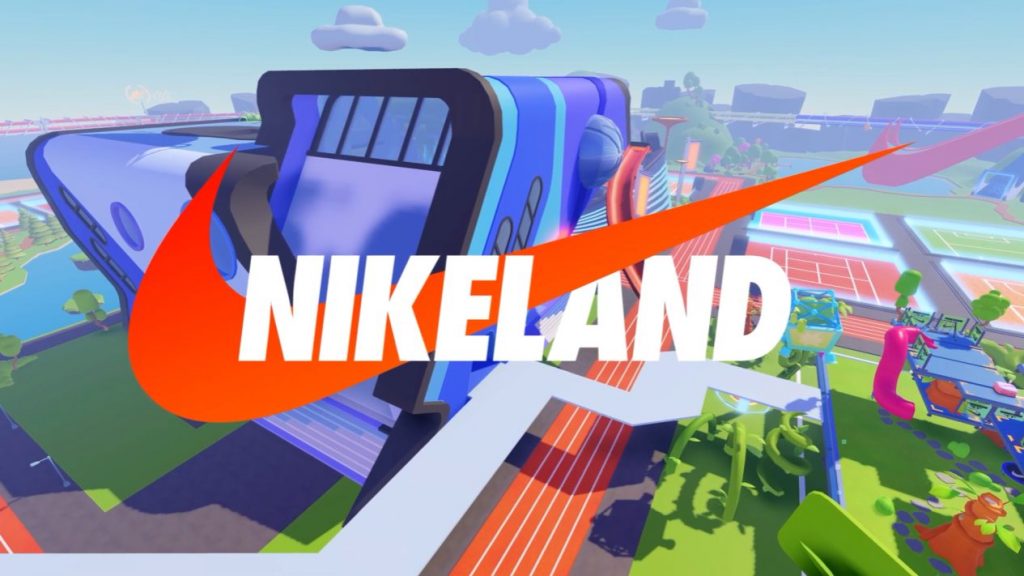
What does the metaverse mean for marketers?
Immersion. Connection. The opportunity to experiment with your brand. The opportunity to be perpetually active, and to build a presence that goes beyond image, text, and video. To bring the brand to life.
To have that life be accessible to an audience that is captive.
For marketers, the metaverse is a new avenue of opportunities. It’s a way of thinking outside what advertising is, a shift on the level of moving from billboards to online messaging. Other forms of advertising won’t be obsolete, but everything that happens in the metaverse will push those efforts far more than marketers are used to – and have ramifications on what will become the expected brand experience.
This means more time spent planning that brand experience. It means nailing down what the brand means, and how people can approach it, and maybe figuring out anew which part of the brand experience is the most fundamental to bring forward.
Furthermore, it means changing the way that brands communicate again when marketers have only just become attuned to communicating on social media.
It will take a little time.
But as more brands turn into the metaverse and create their own little worlds, the absence of a brand on the platform will make it more difficult for that brand to connect with its audience. If most brands create valuable experiences online that allow consumers to interact with and achieve a connection with their favourite brands, then those that opt out of the platform will constantly play catch-up to what is an immersive all-hands experience that consumers will seek out because of sheer innovation.
However, marketing in the metaverse is likely not going to become the only way of marketing. Marketers will still need to hone their other channels, to opt for marketing outside of the metaverse, and to recalibrate what they know about their audiences. As with any other new platform, the metaverse isn’t a one-size-fits-all situation for brands: rather, it depends on marketers to identify what platform is going to suit their needs best.
At the moment, there isn’t much variation between platforms. Those that skew towards younger audiences, such as Horizon Worlds, have to lean into the age-appropriateness of that platform itself, even if it includes the digital ownership aspects. Those that cater for more adult pursuits, such as digital ownership, bring forward a different audience segment to monitor.
None of this is new. Marketing on social media took similar steps and the rewards it reaped had similar benefits.
For marketers, the metaverse is opportunity to start communicating with an audience in a new way. As social media and the internet become increasingly inundated with chatter, the metaverse offers a chance to try again, and at its current stage of newness, conversations happening online are amplified. The widespread appeal isn’t quite there yet.
But it will be.
And marketers should start preparing for it from now.
Look at your brand. See what’s available out there. Start planning. The stories that you have to tell on the metaverse are more than the stories you can tell on social media: they’re three dimensional, living experiences.

What does the metaverse mean for consumers?
There are three different ways consumers approach the metaverse.
Ownership
For consumers who are interested in digital ownership, the metaverse is an opportunity to get in early on investment opportunities and to acquire capital that they can then reinvest, sell, or trade, a little like the dotcom and social media investment cycle. For this subclass of consumers, ownership is the primary force behind any experience they have in the metaverse, so brands will need to keep in mind that their presence there is tied into something tangible, such as an exclusive skin or a limited edition artwork that is only available for certain individuals who meet specific criteria for ownership. For these consumers, their presence in the metaverse is intrinsically locked into what they possess, and they’ll build their collection online with fervour – though it does mean that brands who don’t opt for digital exclusives might not be able to retain this consumer class’ attention for long.
Think of the same people who invest in NFTs, cryptocurrencies, and who keep a thumb on the pulse of what’s going on on social media. They’re highly dedicated to the possibilities of the metaverse, and will serve as the vanguard for the metaverse: most of them have already started dabbling in one or all of the aforementioned activities, and associate the ownership of digital assets with their own identity. While this audience can definitely elevate a brand’s positioning in the metaverse, they’re highly susceptible to brand-jumping, and keeping their ownership will tie in with other forms of communication and the perceived rarity of the products you put out on the metaverse.

Entertainment
The other aspect of the metaverse for consumers is much simpler: entertainment. These people don’t really care if they have the latest digital asset or if they’ve managed to fulfill any criteria to own a specific item, and they’re unlikely to spend the same amount of money as the audience above in order to use the metaverse. Their purpose is simpler: they want entertainment, and the metaverse promises a form of entertainment that is easy to get into. It doesn’t require any practice or any previous experience: the metaverse is as plug-and-play as you can get for people who had no prior interest in playing videogames or online communities.
This audience skews a little younger, and a little more on the side of the metaverse as a platform for fun rather than the metaverse as an investment opportunity. They’re easier to hold onto, but similar to the audience above, they’ll brand-jump from one activity to another to find something that will truly captivate their attention. That said, if you do create an activation that will hold onto their interest, it’s likely that they’ll revisit it more than once, and while their price-consicousness is a key aspect of this audience, it’s a limit that can be overcome with the right brand and the right messaging.
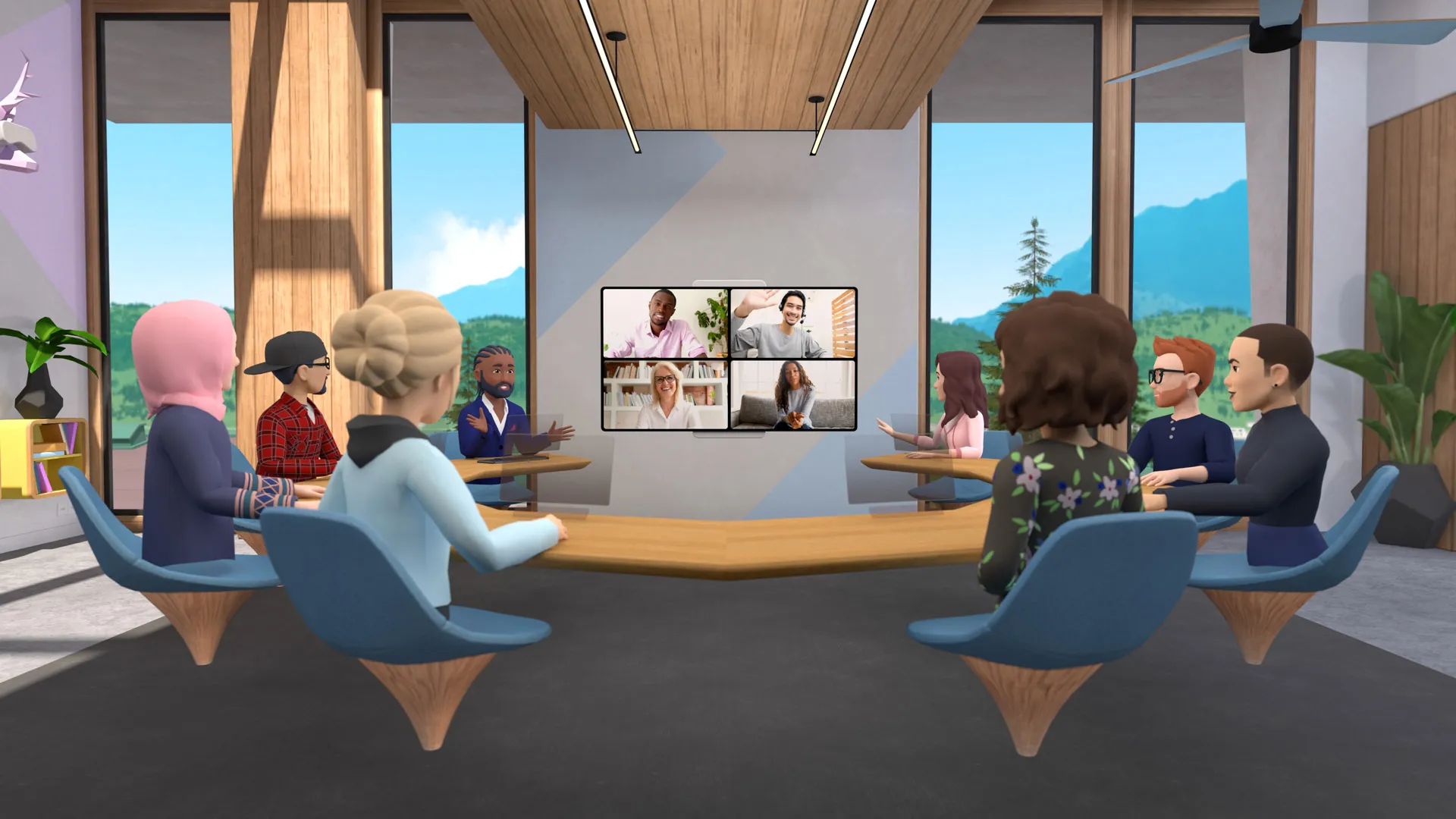
Connection
The rarest of the audience segments, connection-driven audiences use the metaverse as a big chatroom, and a way of forging new relationships in a space where you can put the best aspect of yourself forward and meet as many new people as your internet connection allows. This audience is rapidly growing with the onset of remote working, and while brands are going to struggle to address this audience specifically – as they might not really care about brand experiences unless they provide a way of connecting with others – they’re a valuable audience segment to keep in mind. This audience are the ones who’ll encourage others to hop on and try an activation; they’re the ones who will populate the metaverse without having a specific driver to hop into a particular brand’s world, and the ones who can be swayed into an experience based on whether or not it sounds like a good time. There’s a lot of overlap between the entertainment and the connection audience segments, however it’s worth keeping in mind that this particular audience will skew older than the entertainment segment. These are working professionals who don’t have the time to hop on and invest, or the interest to hop between activities. Their interest lies in relationships, and in creating their own circle of connection online, a little like early chat rooms and forums. Given enough time, this audience segment will create its own tribe, which can then be a little more amenable to attending different activities – but before then, they’re the audience who will be the hardest to approach within the metaverse.

What else do I need to keep in mind for the metaverse?
This is a lot of information. Most of it is speculation and research.
So our final note on the metaverse is this: at this stage, nobody know what the final product is going to look like, and nobody knows when it’s going to actually happen. Real life circumstances will wax and wane, and the metaverse’s progress will similarly wax and wane, so while we can consider that the metaverse is an experiential platform, the way that experience will play out is going to be very different from the final product.
When we think of the internet, a lot of us think of the early days of the internet: AOL chatrooms, geocities websites, AskJeeves, private forums. The ones that came after us, who created social media and who built an internet that runs on interaction and connection and conversation, will think of Instagram, reddit subformums for every concievable hobby, and the astronomical rise of fanworks and their presence in pop culture and entertainment.
Those two internets coexist.
The early metaverse that we have now and the final product that we’ll see later on will also coexist. It will give us an opportunity to rediscover what we loved about being online in the early nineties: the beauty of logging on to a world that was unlimited by anything but your own knowledge.
And it will give us an opportunity to create our own presence online, build our own entertainment, make our own mark, like what we loved about being online in the early 2010s.
But anything beyond – and besides – that is unknown.
What we know concretely is this: the metaverse is going to happen. It’s best to start thinking now about the way you want to approach this platform, to figure out the story you want to tell, to identify where that story is going to take you.
And if you need help with that, we’re here.
And we’re always happy to help.



![The Big Book of Marketing Trends 2023 [Free eBook]](https://switch.com.mt/wp-content/uploads/2023/02/JXXX-2023-01-18-Big-Book-of-Trends-2023-Main-Web-Banner-320x240.jpg)
